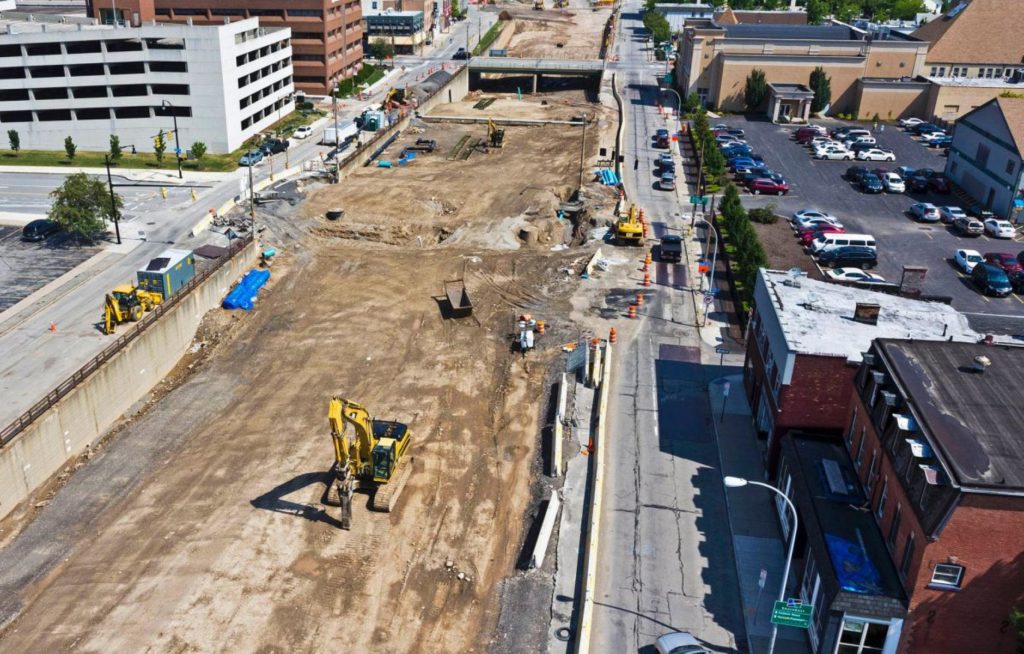What City Observatory did this week
1. Such a deal. Suppose someone offered you this investment deal: You can get $200,000 in preferred stock, that pays a 5% annual dividend tax free, and when it comes time to sell this investment, all of your capital gains will be tax free, too. Can’t afford $200K? No problem, put down $20K, and we’ll loan you the balance–you’ve got 10X leverage, so if the price goes up at all, you’ll reap a ten-fold reward on your investment. Sounds to good to be true? It’s real: real estate. These are the key features of the housing finance system for owner-occupied homes in the US, and explain why we have such huge houses, and such widespread homeownership (at least among those with enough income to take advantage of the features of the tax system which give the greatest subsidy to those with the highest income). And for renters we’ve got . . . nothing (save for the admonition that it would be better if they were high income homeowners).
2. Why freeway widening is still a bad idea in 2017. We look at recent experiences in Houston, Dallas, Louisville and Rochester, all of which are thinking (or rethinking) the desirability of wider freeways. Houston’s Katy Freeway amply demonstrates the fundamental law of road congestion (wider roads induce more driving, and worse congestion). Dallas is cancelling a major new road project through the center of the city. Louisville’s experience shows that tolling actually reduces traffic, and can obviate the need for new capacity. And Rochester is doing what some cities–like Portland–used to do: tearing out a freeway to rebuild urban neighborhoods.

Must read
1. Here’s how to measure changes in rent. Streeteasy, a New York based real estate marketplace, has published a new report looking at changes in rents and incomes in New York City. Not surprisingly, rent increases since 2010 have generally outpaced incomes in the city. What’s really great about this report is the care with which the rental price indices have been assembled. While it’s common practice simply to report the median value of current listings (a technique that is easy, but can be biased by selection effects), Streeteasy has gone the extra mile and computed a repeat sales index that looks at changes in the prices of the same apartment at different points in time to estimate a quality-adjusted rate of change in rents. In addition, their estimates also incorporate the value of landlord concessions. Their methodology is clearly spelled out as well. This is a model for how to tackle the important task of measuring rent levels.
2. Why school segregation is like zoning. Mike Lewyn has a short but trenchant post that emphasizes an important dynamic that is at work when we rely on “local control.” Whether we’re talking about housing or schools (and the two are hardly separate), it’s to every neighborhood’s advantage to draw boundaries in a way that includes richer people and excludes poorer ones (and that’s true regardless of whether we’re talking about school attendance boundaries or zoning boundaries). When every neighborhood tries to pursue this strategy, it results in the systematic exclusion of the poor, and contributes to greater segregation (and higher housing costs) for everyone.
3. The minimum wage and automation. In a new paper, Economist David Neumark argues that one effect of a higher minimum wage will be to encourage employers to automate more tasks, displacing some low wage workers. Are we just hastening the rise of the robots by giving low wage workers raises? Bloomberg View’s Noah Smith argues that this effect is a feature, not a bug, of minimum wage laws. Higher wages serve as an inducement to devise and deploy new labor saving technologies. That’s not a new phenomenon: The high price of labor in England was one of the reasons for the industrial revolution. And with good macroeconomic policies, its possible to grow the economy while getting rid of many of the most dirty, menial and physically demanding jobs.

